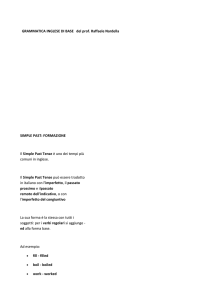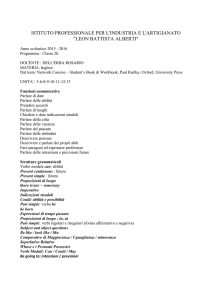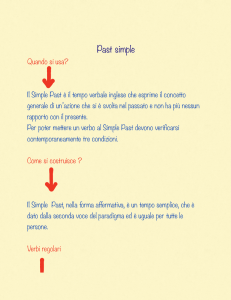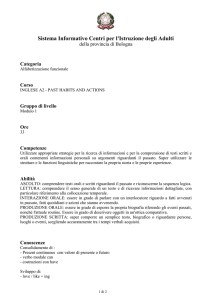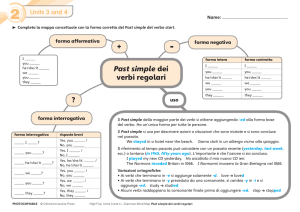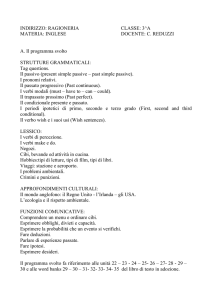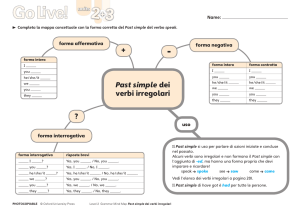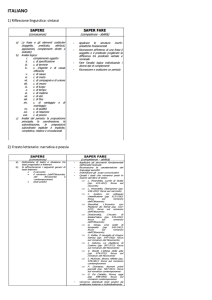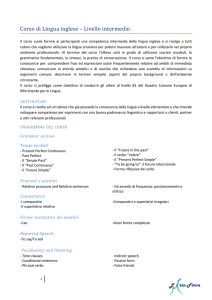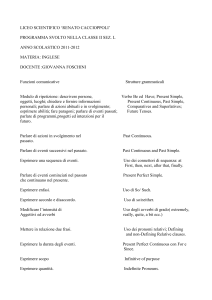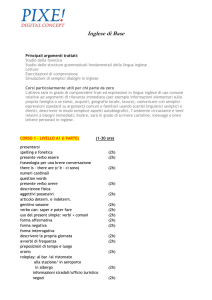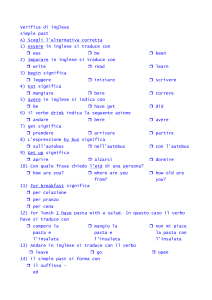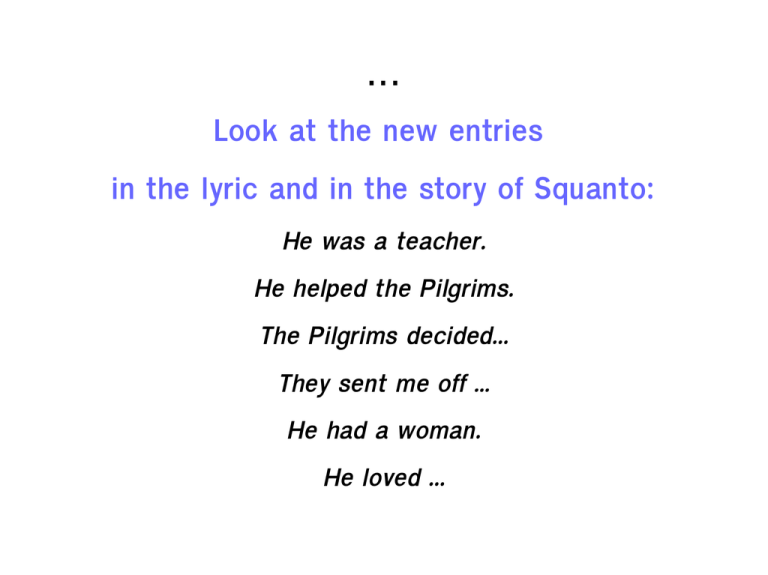
...
Look at the new entries
in the lyric and in the story of Squanto:
He was a teacher.
He helped the Pilgrims.
The Pilgrims decided...
They sent me off …
He had a woman.
He loved ...
What tense is it?
PAST SIMPLE
How do we form the Past Simple?
He loved …
He helped …
Il Past Simple di molti verbi termina in -ed.
I verbi che formano il Past Simple in -ed sono
verbi regolari.
How do we form the Past Simple?
I
YOU
STARTED
STARTED
HE/SHE/IT STARTED
WE
STARTED
YOU
STARTED
THEY
STARTED
How do we form the Past Simple?
We studied
She copied
I tried
They married
SPELLING RULES (1):
●
Se il verbo termina in consonante + y,
la y finale diventa i quando si aggiunge -ed.
How do we form the Past Simple?
We stopped
He planned
They preferred
SPELLING RULES (2):
●
Se il verbo è monosillabico (o bisillabico con l'accento
sull'ultima sillaba) e termina in
vocale + consonante,
la consonante finale raddoppia prima di -ed.
How do we form the Past Simple?
He was
They got
She took
We went
He sent
Altri verbi sono irregolari e hanno una forma propria,
da studiare a memoria (tabella pag.193).
How do we form the Past Simple?
La forma affermativa del Past Simple è uguale per tutte le
persone.
Fa eccezione il verbo ESSERE, che ha due forme: WAS / WERE.
I / HE / SHE / IT
WE / YOU / THEY
WAS
WERE
USE
Si usa il Past Simple per parlare di un'azione iniziata e finita nel
passato.
Si usano spesso queste espressioni di tempo:
YESTERDAY = IERI
LAST MONDAY... = LO SCORSO LUNEDÌ
A WEEK AGO = UNA SETTIMANA FA
USE
Il Past Simple si può tradurre con:
- il PASSATO PROSSIMO
- il PASSATO REMOTO
- l'IMPERFETTO

